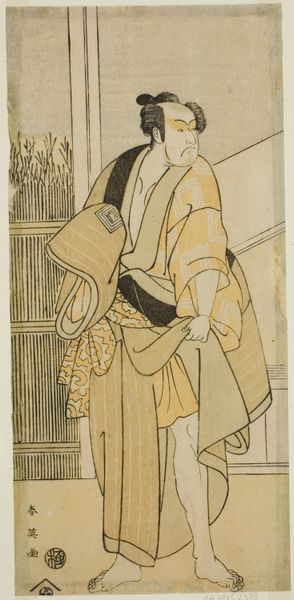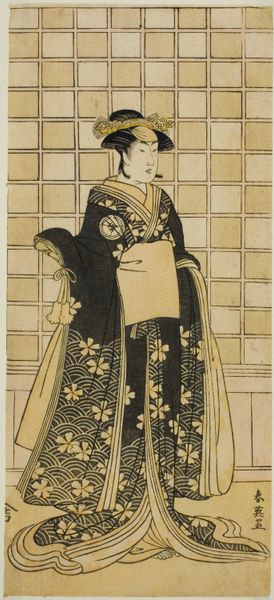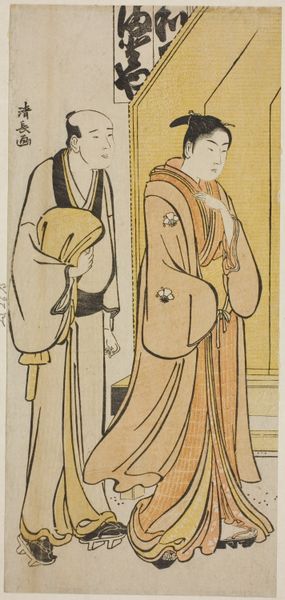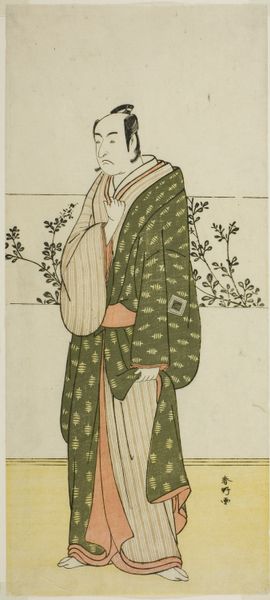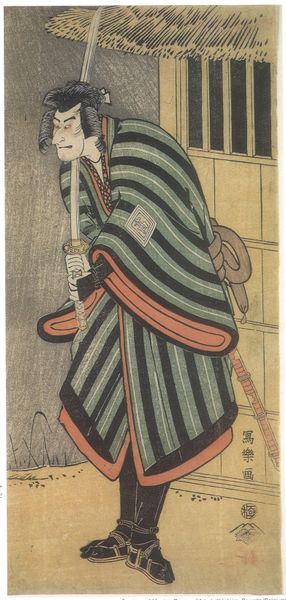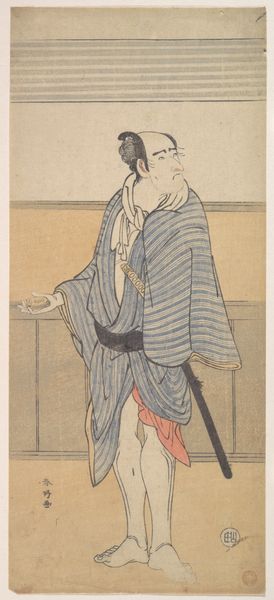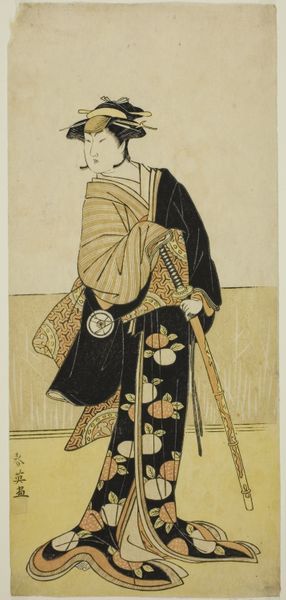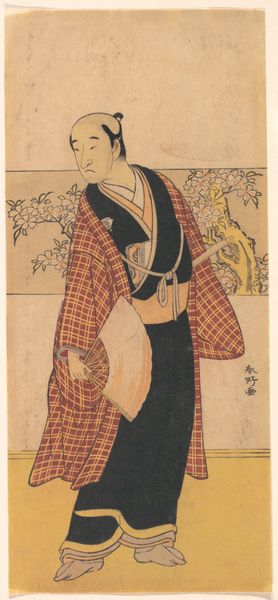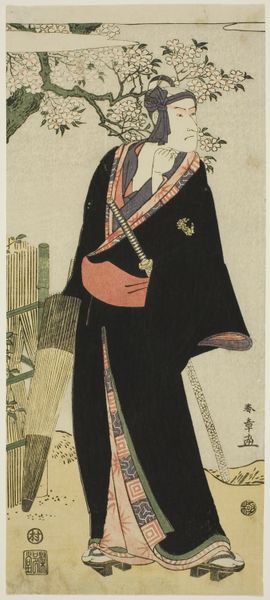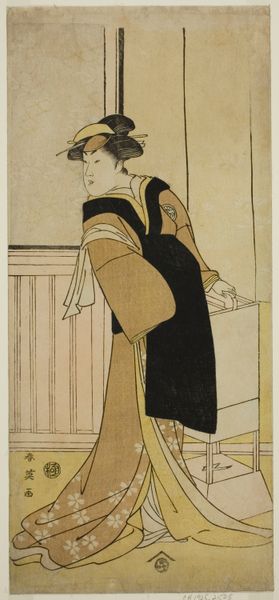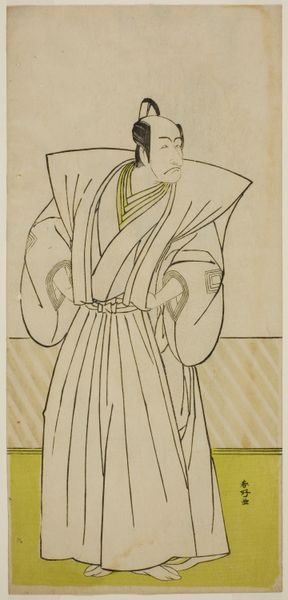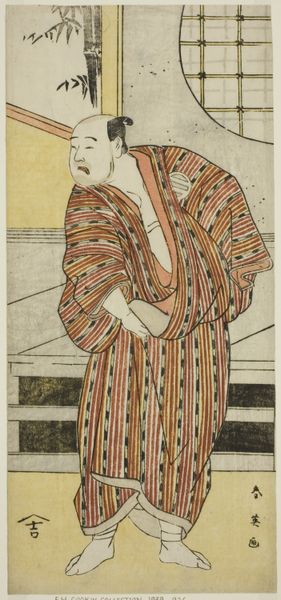
print, woodblock-print
#
portrait
# print
#
caricature
#
asian-art
#
caricature
#
ukiyo-e
#
woodblock-print
#
costume
Copyright: Public domain
Curator: Standing before us is Tōshūsai Sharaku's woodblock print, "Osagawa Tsuneyo II as the hairdresser O-Roku," dating back to 1795. It’s part of the Ukiyo-e tradition, a period marked by an explosion of popular art and culture in Japan. Editor: It's quite striking! Immediately, I get this sense of restrained theatricality, almost like she's paused mid-performance to give the audience a knowing glance. Curator: Sharaku's prints were typically portraits of Kabuki actors, but this one is somewhat of an anomaly depicting an actor portraying a female role in the everyday task of styling hair. Notice the material depiction of the elaborate kimono and its graphic impact! Editor: Exactly. And there’s this tension between the refined artistry and what feels like a subtly biting caricature. Is it me, or does he almost push the boundaries of conventional beauty here? Her pensive expression almost feels melancholy. I am curious what materials were available and how were these widely disseminated among different audiences? Curator: It's crucial to acknowledge the material conditions here. Ukiyo-e prints, although striking, were products of a highly structured workshop system involving the artist, the carver, and the printer. Color choices, paper quality, even the time of the year dictated costs and distribution, reaching merchants, actors, and wealthier townspeople who wanted to partake in the fleeting cultural trends of Edo. It seems Sharaku disappeared after just ten months, leaving the authorship and the materials rather a mystery. Editor: A mystery indeed! I appreciate the labor and intentional choices that would produce these works, making "art" for everyone and documenting what was a vital moment in time. Knowing about the materials—wood, inks, paper—gives us access to an entirely different aesthetic experience; like hearing the artist's whisper on how people experienced the performance. Curator: And these prints also operated within a carefully structured market, offering an outlet for artists but at the same time reflecting the commercial forces at play within the Tokugawa period. Editor: Thinking about how these pieces functioned, almost like collectible ephemera…it humanizes history in a way, doesn't it? That a playbill could become something worth preserving? Well, I know I'm keeping this tour experience filed away. Thanks. Curator: My pleasure! And I'll leave pondering about access to materiality for all and if Ukiyo-e was revolutionary at the time.
Comments
No comments
Be the first to comment and join the conversation on the ultimate creative platform.

